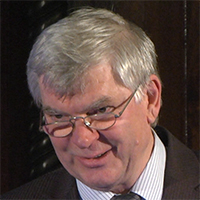Falls Sie Ihre ÖÄK-Nummer nicht wissen, können Sie es hier abfragen: Abfrage ÖÄK Nummer
ACHTUNG: Diese ÖÄK-Arztnummer entspricht NICHT der bisherigen Arztnummer der Landesärztekammern, sondern ist eine NEUE Nummer, die die Ärztin/den Arzt ein Leben lang begleitet!
 |
Sie haben das Video angesehen oder den Test erfolgreich bestanden. |
 |
Sie haben den Vortrag noch nicht angesehen oder den Test negativ beendet. |
 |
Für diesen Vortrag gibt es einen Test, den Sie noch absolvieren müssen. |
Melatonin: a novel antihypertensive compound? Mechanisms and hypotheses (Vorschauvideo)
Prof. Dr. Michal Zeman | Von der experimentellen Leberpathologie zur zellulären Pathopyhsiologie und Pharmakodynamik: ein Symposium für Frau Prof. Theresia Thalhammer
Weitere Informationen
Dies ist ein Vorschauvideo! Um die kompletten Videos dieser Veranstaltung zu sehen, loggen Sie sich bitte ein oder registrieren Sie sich >>
Melatonin, the endocrine product of the pineal gland, is synthesised and released in a characteristic daily pattern, with high concentrations occurring during the night and low during the day. Melatonin synthesis is under the circadian control and it is considered as the main neuroendocrine signal transferring information about prevailing environmental light:dark conditions to the organism. Recently, pleiotropic effects of melatonin have been demonstrated and melatonin was reported to modify activity of different systems, such as the immune, neural, gastrointestinal and cardiovascular system. It was repeatedly demonstrated that melatonin has a capacity to decrease blood pressure in both humans and animal models of hypertension, especially in spontaneously hypertensive rats. Mechanisms behind the hypotensive effects of melatonin are unknown but they are needed for development of new agonists with improved hypotensive effects. Recent data suggest that melatonin can modulate cardiovascular system activity at several levels, starting from the improved rhythmicity of central and peripheral circadian oscillators, improving sympatho-vagal balance and ending with the modulation of activity of peripheral vessels. Our studies revealed that melatonin receptors type 1 (MT1) are expressed differentially across vessels, with a high density occurring in the adventitia of large conduit arteries, such as the aorta and in the smooth muscle layer of smaller resistant arteries (mesenteric artery). Surprisingly, we did not detect melatonin receptors type 2 at the level of mRNA in any type of studied vessels. Moreover, we demonstrated the high density of MT1 receptors in the perivascular fat suggesting that melatonin can act also outside the vessels and protect the vessel wall from negative effects from outside, especially from pro-inflammatory cytokines produced by immune cells infiltrated in the perivascular fat. In addition, melatonin acting via MT1 receptors can improve secretory profile of adipocytes via suppressing vasoconstriction agents (such as leptin, resistin, visfatin) or stimulation of vasorexation via adiponectins or still uncharacterised adipocyte derived relaxing factor.
| Titel: | Melatonin: a novel antihypertensive compound? Mechanisms and hypotheses (Vorschauvideo) |
| Vortragender: | Michal Zeman |
| Datum: | 21.01.2015 |
| Dauer: | 2:52 min. |
| Ort: | Wien |
| Fach: | - |
| Art: | - |
| Thema: | Hypertonie |
| Veranstaltung: | Von der experimentellen Leberpathologie zur zellulären Pathopyhsiologie und Pharmakodynamik: ein Symposium für Frau Prof. Theresia Thalhammer |
| Moderation: | Peter Pietschmann (Institut für Pathophysiologie und Allergieforschung, MedUni Wien, AKH) |

























